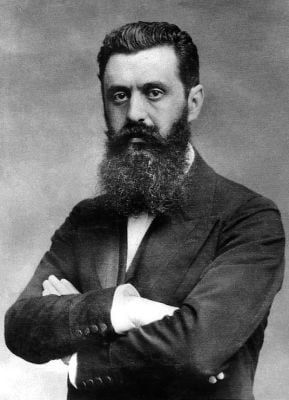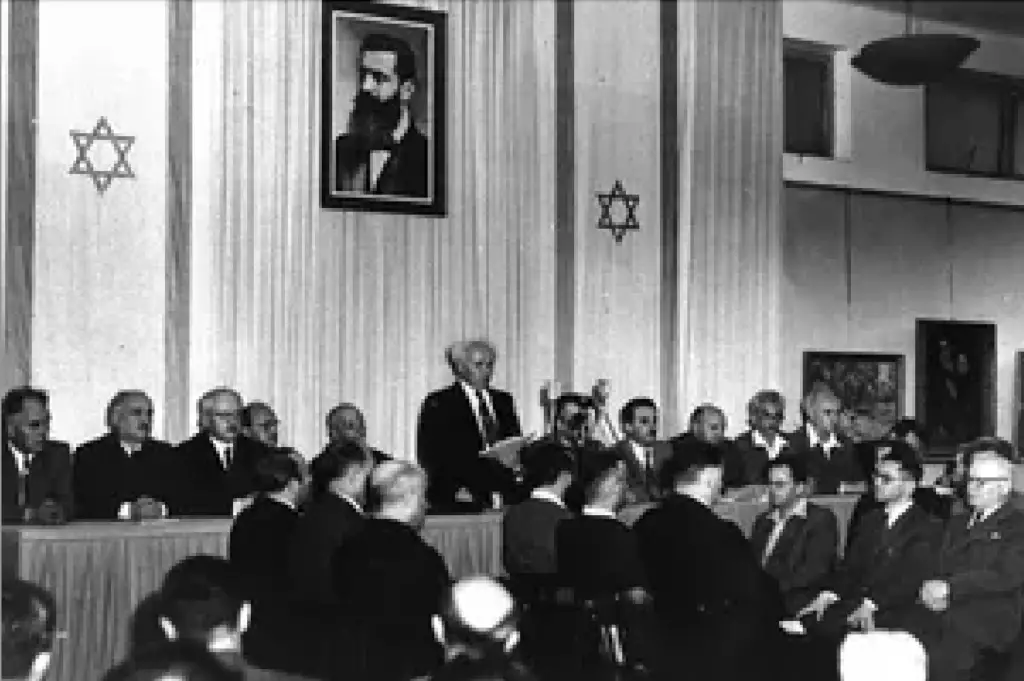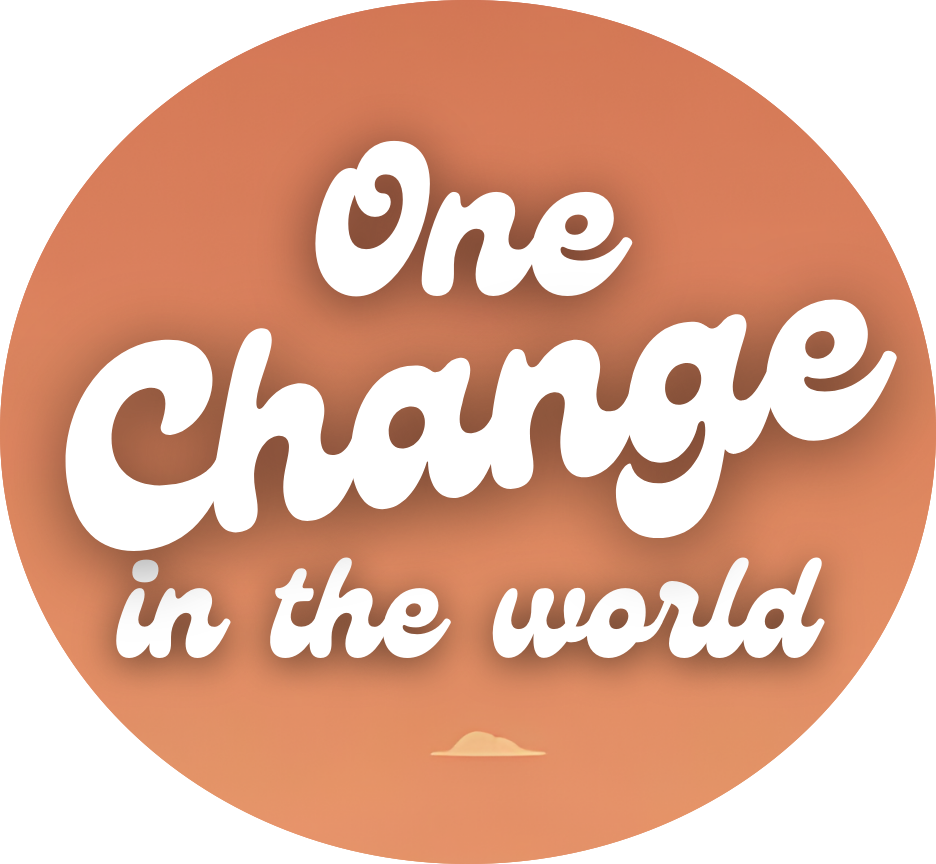To understand the causes of the Israeli-Palestinian conflict, one must look at the Near East region, also known as the Middle East more generally. The term Levant, derived from the Old French word for “east”, is sometimes used.
The exact borders will be clarified later, since they represent one of the essential issues of the Israeli-Palestinian conflict. In this territory to the east of the Mediterranean, two visions are confronting each other, and it is important to understand that they are made up of countless nuances that are constantly changing. For this reason, the presentation given here of the causes of the Israeli-Palestinian conflict is intended to be as complete as possible, but sufficiently simplified to preserve its educational value.
I. What is Zionism (19th century)
A. Naming the idea of Zionism
In the 19th century, Europe was traversed by a movement of nationalities, that is, by a desire to give each person – identified by a language, a project, a culture, a heritage – its own state. It is according to this logic that the Zionist idea was born, Zionism being defined as a political and religious movement whose aim was to reconstitute a Jewish nation in Palestine.
The idea of Zionism, although it has existed in people’s consciousness since the dispersion of the Jews in antiquity, was not really advanced until the 19th century. As such, it is not surprising that it was not at all unanimous from the outset, and that Jews were divided on this question.
The word itself was thus born under the pen of the Austrian Nathan Birnbaum, in 1890, in reference to the hill of Zion, emblems of the presence of God for Judaism.
B. The Fathers of Zionism as a Political Idea
In a more political sense, another author can also be considered the father of Zionism. This is Moses Hess, who in Rome and Jerusalem wished to achieve the unity of the Jewish nation.
Also in the 19th century, the pamphlet Self-Emancipation written by Leon Pinsker found an important echo in the Jewish communities of Eastern Europe, and developed the Zionist idea by denouncing the persecution of the Jews after the pogroms (attacks against the Jews of Russia) in 1881. Leon Pinsker then founded the movement of the Lovers of Zion, which constituted the first aliyah, i.e. immigration to the Land of Israel, in this case from Russia, Poland and Romania. This movement merged with the Zionism advocated by Theodor Herzl, which must now be mentioned.

Author of the Book Der Judenstaat
Indeed, it has been shown that Zionism was formed from several sources, but it then developed more particularly around the writings of Theodor Herzl, and in particular the work entitled Der Judenstaatwhich means “The State of the Jews”. Theodor Herzl was an agnostic Austro-Hungarian Jew who was both a writer and journalist. He traces his commitment to the Dreyfus Affair, during which he was a correspondent and became convinced that a “permanent shelter for the Jewish people” was necessary. Der Judenstaat affirms the specificity of the Jewish people, which cannot be supported by the peoples of the world, anti-Semitism leading to the necessity of a territorial solution to the Jewish question, in Palestine.
C. Theorizing the State of the Jews
The publication of this work provoked a controversy within Judaism itself, for religious (the return of Jerusalem is linked to the return of the Messiah) and geopolitical reasons. Zionism thus went against the traditionalism of the rabbis (the religious leaders of the Jewish community who were specialists in Jewish law). But it was the international campaign launched by Theodor Herzl, including the financial support of Baron Edmond de Rothschild, that gave concrete form to Zionism. A Zionist Organization, with Theodor Herzl as its founding president, was created in 1897, and then met in congress every two years until 1946.
The Zionist Organization set out a common program for the Zionist movements, and sought the establishment of a state in the territory of Palestine by the Jewish people with a common Hebrew language. The dissension between Zionist and anti-Zionist Jews remained marked until the Six Day War in 1967. Most of the traditional Jews and rabbis joined the Zionist cause, and the opposition shifted within Zionism.
II. How did Zionism take hold?
A. The triumph of the Zionist idea within the Jewish world despite numerous debates
The debates in the Jewish world can be traced to three sources of influence:
- Liberalism from the United States, which advocates the integration of Jews where they are
- Karl Marxism, close to the USSR, which called for an international social revolution based in particular on the Yiddish language
- and Zionism hoped for in Palestine, which was also very much to the left, in that it valued manual salaried work, the agricultural and industrial proletariat.
For religious Jews, and the rabbis in particular, Zionism is an ungodly movement, which politicizes the Jewish religion, that is, because it centers Judaism around a people instead of God. It is by scrupulously following the commandments that God will liberate the Jews. Moreover, Zionism makes both the Hebrew language and the Jewish people themselves too commonplace, even banal.
It is true, however, that Zionism has a certain interest for the Jewish religion: the latter is no longer confined to the private sphere, and Zionism can be reconciled with the religion, constituting a preparation for the return of the Messiah, it being established for all that Palestine is indeed the promised land on which the Jews can find themselves.
In spite of all these dissensions, Zionism became the majority idea in the Jewish world, thanks to a strong desire to preserve Jewish identity by returning to Judea, now Palestine, and by founding a protective state there, while anti-Semitism, which was evolving into new forms, was still threatening.
It would therefore be easy to understand the creation of Israel as a protective reaction to the Shoah during the Second World War. However, this statement needs to be qualified by remembering the much older history of the Zionist idea, and by remembering that the majority of Eastern European Jews emigrated to the United States, both before and after the Second World War, and that the USSR was a much safer place than Palestine.
The challenge was therefore to give the Jewish people autonomy and independence.
B. Anti-Semitism as a reason for Zionism
The advent of the rule of law and the progress of the value of equality have led to an improvement in the condition of the Jews, although many forms of discrimination still exist, for example in Christian countries where they are forbidden to enter certain professions (military, diplomatic, administrative, judicial). In Europe they were considered as subversive stateless people.
The desire of the Jews to have their own territory was then either encouraged by the anti-Semites who reproached them for being stateless, or was also criticized as a double game, with the thought that the Jews were at the same time seeking to establish world power.
In the Arab-Muslim world, these discriminations have lasted longer than in Europe, and are still relevant today, especially since the creation of the State of Israel.
Finally, in the opposite direction, founding a State in Israel is a way to protect oneself physically, to escape discrimination, but also to safeguard an identity that is threatened by assimilation, as David Ben Gourion, founder of the State of Israel, reminded us.
Finally, it should be remembered that in the aftermath of the Second World War, the Jews also had important allies, including the two great powers, the United States and the USSR, to which must be added, of course, the supporters of religious tolerance.
C. A historiography that relativizes the common origin of Judaism
Zionism is based on the idea of the return of the chosen Jewish people to the Promised Land called Eretz Israel, and although this person has spread throughout the world, forming a diaspora, Judaism is rooted in a common origin. This important assertion, since it is the foundation of Zionism, has been challenged by the historiography of our century and remains a controversial issue. We will limit ourselves here to reporting several notable contributions.
Marc Ferro: without taking away the legitimacy of the Jews having a state, Ferro wants to show that all Jews are not the descendants of the original people of Judea, contrary to what the closed codes of transmission of the Jewish religion may lead one to believe, so that the ideal of the “Return” is more a myth than a reality, and therefore that anti-Semitism has no foundation, since not all Jews are Semites.
Arthur Koestler: In the Thirteenth Tribe, published in 1976, Koestler asserted that the majority of Central European Jews – the Ashkenazim – speak Yiddish because they are descendants of the Khazar kingdom, not of the people of ancient Judea, although they share its religion. This thesis was later refuted by historians and scientists.
Ernest Renan: in a lecture entitled Le Judaism come race at some religion given to the circle of Saint-Simon in 1883, Renan wanted to put forward the idea that the Jewish religion, although originating from a single community in Judea, had nevertheless subsequently become a universal and proselytizing religion, which had spread throughout the Roman Empire and then even further.
Shlomo Sand: in How the Jewish People were invented, Shlomo Sand, who has declared that he no longer wishes to define himself as a Jew, takes up the idea that the Ashkenazim are descendants of the Khazars to show that Judaism is a construction in the form of a national narrative, and is therefore ultimately a myth. His historiography is still controversial, both in Israel and in the rest of the world.
III. How did the project come about?
A. Beginning of migration to Palestine
The United States, in the grip of the Great Depression after 1929, reduced immigration opportunities. Jews were forced to flee their country because of anti-Semitism. This redirects migration to the territory of Palestine, although it is less secure.
The Jews who migrate are mostly found in the western part of the USSR, where they were assigned to a residence zone until the Russian revolutions of 1917. Prior to that, the Jews had been persecuted by the Christian majority: the pogroms of 1881. Since then, the Jews of Russia have been divided between two main solutions: emigration, either to America or to Palestine; or revolt, asserting their rights to the territories where they reside.
Between 1881 and 1939, 3 million Jews left the USSR to settle in America for the vast majority of them, in Palestine for a minority, the others settling in France, Great Britain, South Africa and Argentina.
This strong emigration movement was intensified after 1949, when the USSR and Israel became enemies, leaving only about 100,000 Jews in Russia today.
In 1939, there were 500,000 Jews in Palestine, representing 3.1% of the world’s Jews.
B. How was Palestine colonized?
Palestine was colonized by the Zionists through the influx of migrants: in 1881 there was one Jew for every 22 Arabs; by 1948 the ratio had been reduced to one Jew for every two Arabs; and by 2020 the ratio was largely reversed: 5 Jews for every Arab.
Jews who make aliyah be called Olim. Since the land in Palestine is occupied by Christian Arabs or Muslim Arabs – as well as by Jews who do not adhere to Zionism – one solution is to buy land. This was the aim of two organizations dependent on the OS, created in 1901: the Jewish National Bank and the Jewish National Fund. If in 1920 Jews owned 7% of the cultivable area (estimated at 900,000 ha), this proportion had risen to 18% by 1945.
This way of acquiring part of the territory of Palestine was quickly complemented by a more general strategy which aimed at controlling essential resources such as water, and access, such as traffic routes.
The proclamation of the State of Israel in 1948 marked a turning point, from which colonization was also carried out by force of arms. Thus, after the Six-Day War of 1967, Israel went beyond the green line established in 1949, i.e. the ceasefire line, and occupied East Jerusalem, the West Bank, the Sinai Peninsula, which was returned in 1979 by a peace treaty with Egypt, and then from 1981 the Golan Heights.
Colonization by arms, although condemned by international law, was a much more effective way than the market acquisition of land. Abandoned land is transferred to the State of Israel via the Jewish National Fund, as Israeli law prohibits the return of Palestinian refugees.
Expropriation in the public interest also allows for the acquisition of new land for Jewish use, especially given the weaknesses of Palestinian registries, although appeals can be made.
The land market is now no longer an option for Israel, as the Palestinian authority blocked it after 1993 and 2013 by prohibiting the sale of land or buildings to Israelis, for a penalty that can include death.
C. How did the State of Israel come into being?
The support of three international organizations
Three major organizations must be mentioned because they rallied Jewish voices internationally:
- The Alliance Israélite Universelle, founded by Adolphe Crémieux in 1860 and chaired between 1943 and 1976 by René Cassin. Its role was to emancipate Jews through a school network and to make their voices heard by the public authorities. This organization was opposed to Zionism until 1945.
- The Zionist Organization, which became the World Zionist Organization in 1960, was created in 1897 with the explicit objective of giving sovereignty to the Jewish people in Palestine. Its role was crucial to Zionism, since it worked under the British mandate given by the League of Nations for the creation of the Jewish national home.
- The World Jewish Congress was created in 1936 to counter the anti-Semitism that was growing in Europe. Its aim was to strengthen solidarity between Jewish communities, to give them a strong political weight, which should also allow the establishment of the State of Israel. The organization, which was divided into five branches corresponding to five regions of the world, wanted to be the diplomatic voice of the Jews, and as such was in the forefront in demanding reparations from Germany after the Second World War.
Recognition in law
On the formal level, the State of Israel was founded through a series of treaties, declarations and texts, which gave it an official existence.
In the Basle program, the congress already envisaged several means of establishing a “publicly and legally recognized homeland in Palestine”.
This desire is more concretely expressed in a letter dated November 2, 1917, sent by the British minister Balfour – which has since been named the Balfour Declaration – and addressed to Lord Rotschild and published in the press, where it is announced that “his Majesty’s Government favorably contemplates the establishment in Palestine of a national home for the Jewish people and will use all its efforts to facilitate the attainment of this objective”, while preserving the rights of the communities already present in Palestine.
This Balfour Declaration was confirmed at the San Remo Conference in April 1920, with all the League of Nations states endorsing the declaration. A mandate was given by the League of Nations to Great Britain over Palestine, which meant that it was up to Great Britain to prepare for the independence of this territory, to help it become autonomous, to preserve its rights, and to establish a Jewish home, taking into account the religious importance of Palestine and in particular the city of Jerusalem.
The Biltmore program, the result of the Biltmore Conference in New York in 1942, expresses the solidarity of many Zionist organizations with the persecuted Jews in Europe. The program also called for the realization of the Balfour Declaration and the mandate given by the League of Nations, and conditioned a new, peaceful and just world order on“the problem of the homeless Jews being finally solved,”urging that “the gates of Palestine are open.
After the Second World War, numerous projects for the partition of Palestine were proposed, but without success. The UN was given the task of proposing a partition plan. The UN committee submitted its report, and resolution 181, which provided for a threefold partition of Palestine, was voted on in November 1947.
The final step in the legal recognition of the State of Israel was its proclamation in 1948 by David Ben Gurion, then president of the Jewish National Council: ‘We, the members of the People’s Assembly, representatives of the Jews of Palestine and of the Zionist movement, are solemnly assembled on this day of the cessation of the British mandate. By virtue of our natural and historical rights and the resolution of the United Nations, we proclaim the establishment of a Jewish state in the land of Israel.
This speech of May 14, 1948, at the Tel Aviv Museum, which marked the creation of the State of Israel, triggered a war with neighboring countries the very next day.

IV The reception of the Arabs of Palestine
A. Israel against the Arab states, the Palestinians are driven out of their land
The UN resolution passed in 1947, which provided for a three-way partition of Palestine, was initially rejected by the Arabs of Palestine. A civil war was then underway between Israel and the Arabs of Palestine, supported by volunteers from neighboring Arab states. From May 15, 1948, the day after the proclamation of the State of Israel, the conflict became more generalized: Egypt, Syria, Iraq, and Transjordan sent troops to Palestine, not to defend the Palestinians, but for various other reasons of their own.

The war was won by Israel in 1949. It caused the exodus of over 700,000 Palestinians from the new Israeli state. The Armistice treaties defined a Green Line, i.e. the new borders of the State of Israel whose surface was enlarged compared to the partition outline proposed by the UN, the religious capital of Jerusalem being divided into two sectors.
The result after the war following the arrival of the Jews was the dispersion of the Arabs of Palestine, refugees in Jordan, Lebanon, Syria and Egypt.
B. Palestinian identity is constructed in the face of catastrophe
From then on, they began to form a diaspora themselves, in that they were expelled from their territory but shared a common ambition to return to their land. A common identity emerges by reaction, which is reflected by the name’s Palestinians”: this designation of populations speaking similar Arabic dialects on the same Palestinian territory tends to replace the old expression“Arabs of Palestine”, as the Israeli-Palestinian conflict is confirmed, although there is no such thing as Palestinian citizenship (a “Palestinian State” will only be proclaimed in 1988, and is still not recognized by a quarter of the members of the UN in 2017). There is therefore no unified Palestinian identity at this time, but rather a plurality of Palestinian identities welded together by a sudden common insecurity.
Indeed, it was following this exodus and the appropriation of land by Israel that a collective resentment of Palestinians towards Israel was fueled, especially since these refugee camps were marked by poverty and unemployment, often under the control of external authorities, whether neighboring Arab states or Israel. A UN body – the United Nations Relief and Works Agency for Palestine Refugees in the Near East ( UNRWA) – was created in December 1949 to meet the basic needs of these populations, despite the resistance of the communist countries who saw it as American imperialism.
Originally temporary, this agency was constantly renewed, influencing the geopolitics of this region of the world until today. Palestine would then remain at the heart of the divergent interests of the states that make up the Middle East, with the Israeli-Palestinian conflict that was thus cemented enduring to this day, complicated by the interstate relations within this Middle East, and thus permanently marking international relations.
→ Dates in World History
Originally posted on 11 February 2022 @ 18:16
